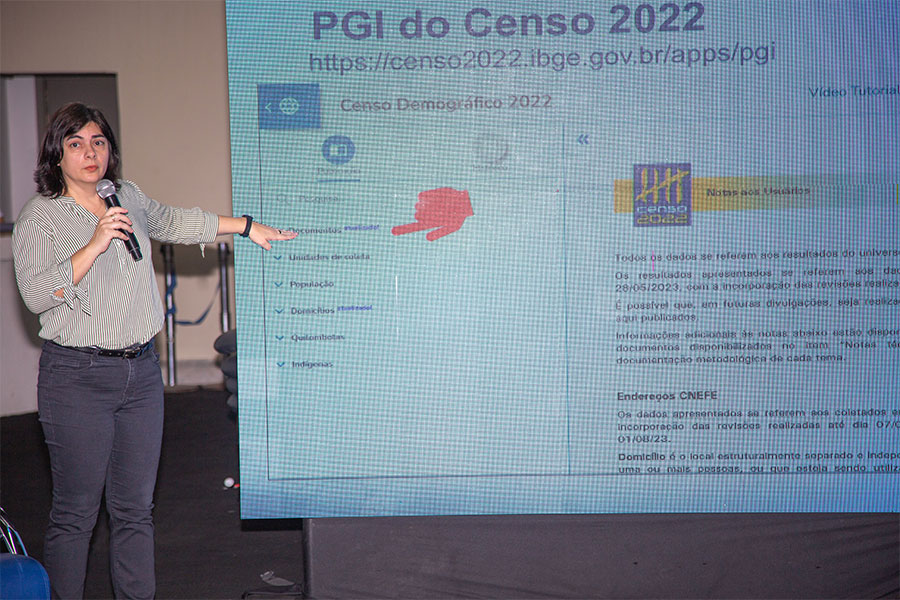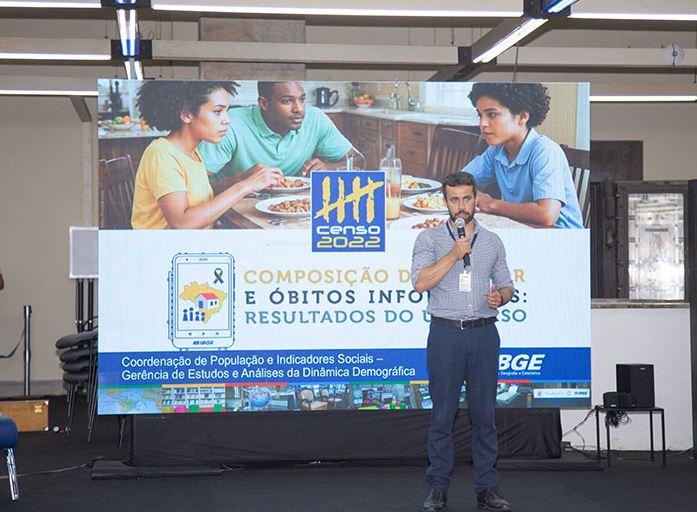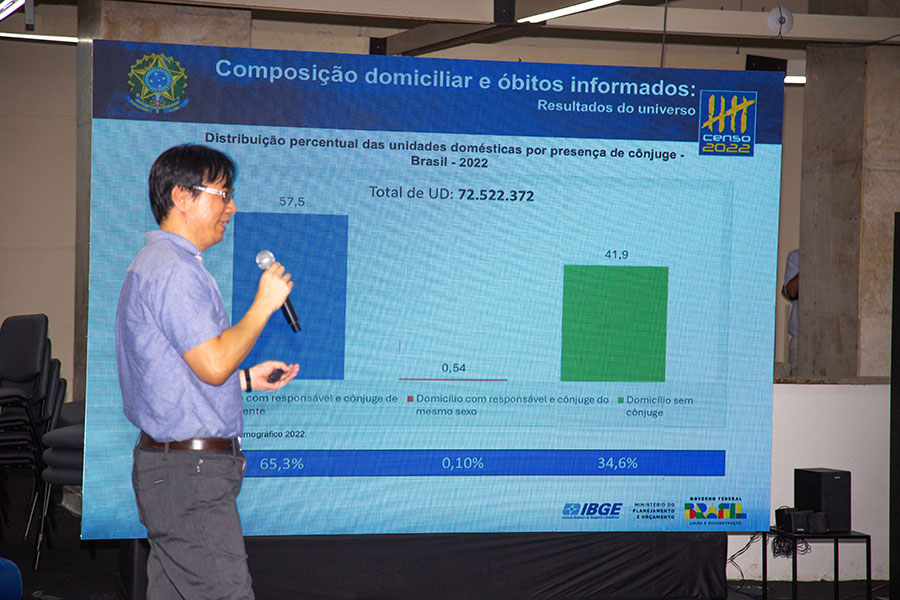Censo 2022
2022 Census: IBGE reveals composition of households and reported deaths at Casa Brasil IBGE
October 25, 2024 06h20 PM | Last Updated: October 29, 2024 02h50 PM

This Friday (25), in the morning, at an event at Casa Brasil IBGE, located in the Palácio da Fazenda, downtown Rio de Janeiro, the IBGE presented new information collected by the 2022 Popualtion Census. This time, data were released on family composition in Brazilian households, based on the relationship of kinship or cohabitation of residents with the householder, and deaths reported by residents.
The Digital IBGE channel, on the Institute's website, and the organization's social media broadcast the ceremony, which was attended by the following civil servnts: João Hallak, Deputy Director of Surveys; Patricia Vida, Deputy Director of Geosciences; Gustavo Junger, Coordinator of the Population Census; Izabel Marri, Manager of Demographic Studies and Analysis; and Marcio Minamiguchi, Manager of Projections and Estimates.
The 2022 Census results can be accessed on the IBGE website and on platforms such as SIDRA, Census Ovreview and the Interactive Geographic Pltaform (PGI). On the latter two, information can be viewed through interactive maps.
The publication made available today contains information regarding occupied private housing units, both permanent and improvised, such as the number of residents, type of housing unit and type of household. The survey takes into account the sex, color or race and age group of the householder. Another aspect addressed is the number of deaths that occurred between January 2019 and July 2022, of persons who had lived with residents of private housing units. The survey covers Brazil, its Major Regions, Federation Units and Municipalities.

João Hallak, IBGE Deputy Director of Surveys, reinforced the importance of another release of the 2022 Census - Photo: Marcio Costa
“The information released comes from the basic questionnaire of the 2022 Census. Regarding the composition of households, the characteristics of householders are outlined based on the household data. The survey addresses the existence of a spouse or children, which are important elements for an initial portrait of the composition of the households. In addition, the households were classified as one-person, nuclear, composite or extended,” explained João Hallak.
“Statistics on household composition and deaths are relevant for guiding public policies to combat mortality, as an indicator of population health and territorial development. It is essential to know where the households are and where the reported deaths occurred. This spatial dimension is provided by the increasing integration of statistical information with geospatial data,” stated Patricia Vida.

Gustavo Junger emphasized that all the releases of the 2022 Census represent an achievement for society and should be celebrated. “Conducting the Population Census requires extremely complex logistics, involving hundreds of thousands of people with the aim of covering a huge territory like Brazil. We also had other battles, such as against Covid-19, underfunding that caused the 2022 Census to be postponed again, and fake news, which brought unprecedented difficulties. This fight was only successful with the participation of technicians from various areas of the IBGE and, mainly, with the work of enumerators, who were able to obtain information that will support the design of public policies over the course of a decade.”

“The statistics regarding deaths reported by household residents are different from those of vital records. This is self-reported information, subject to memory errors regarding when the death occurred or loss of deaths from one-person households over time,” observed Izabel Marri.

Marcio Minamiguchi, in turn, detailed the data related to family composition. He pointed out that although the analysis of households has as its main variable the relationship of kinship or cohabitation, the information published today does not constitute a study on the family. According to him, the complete data for analyzing families (marriage and identification of a father or mother in the household for all residents) are only investigated in the Census sample questionnaire. “There was a significant increase in the proportion of households woth a female householder, jumping from 38.7% in 2010 to 49.1% in 2022,” he concluded.





















